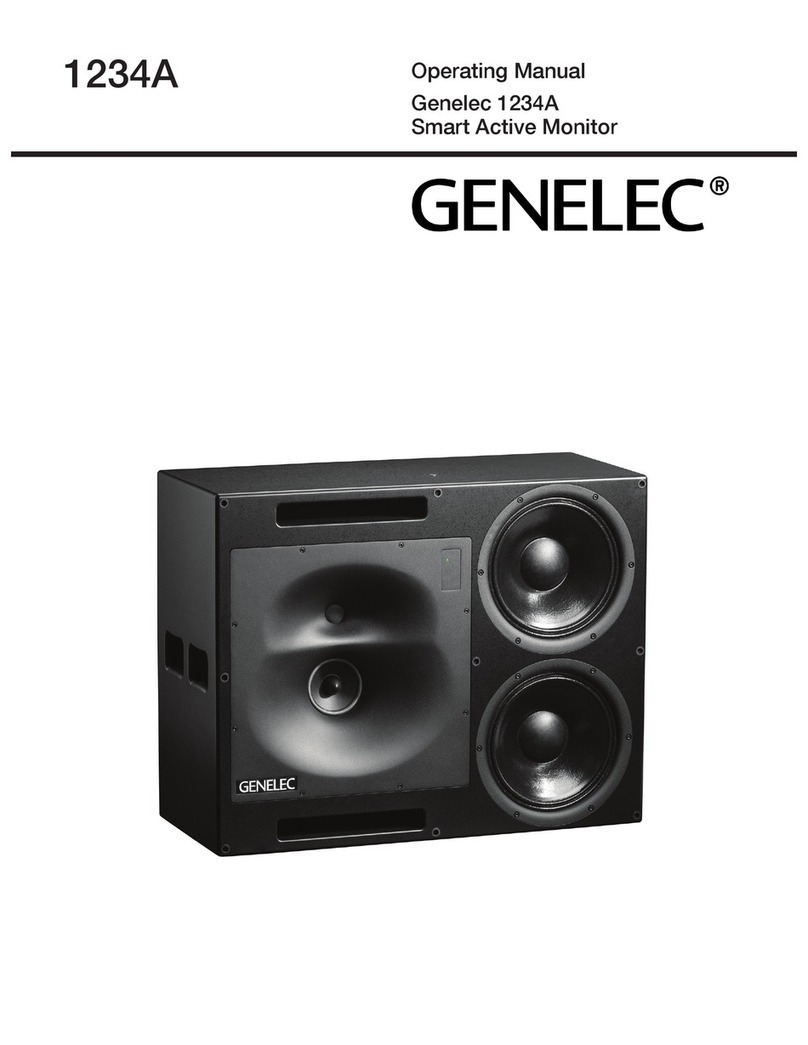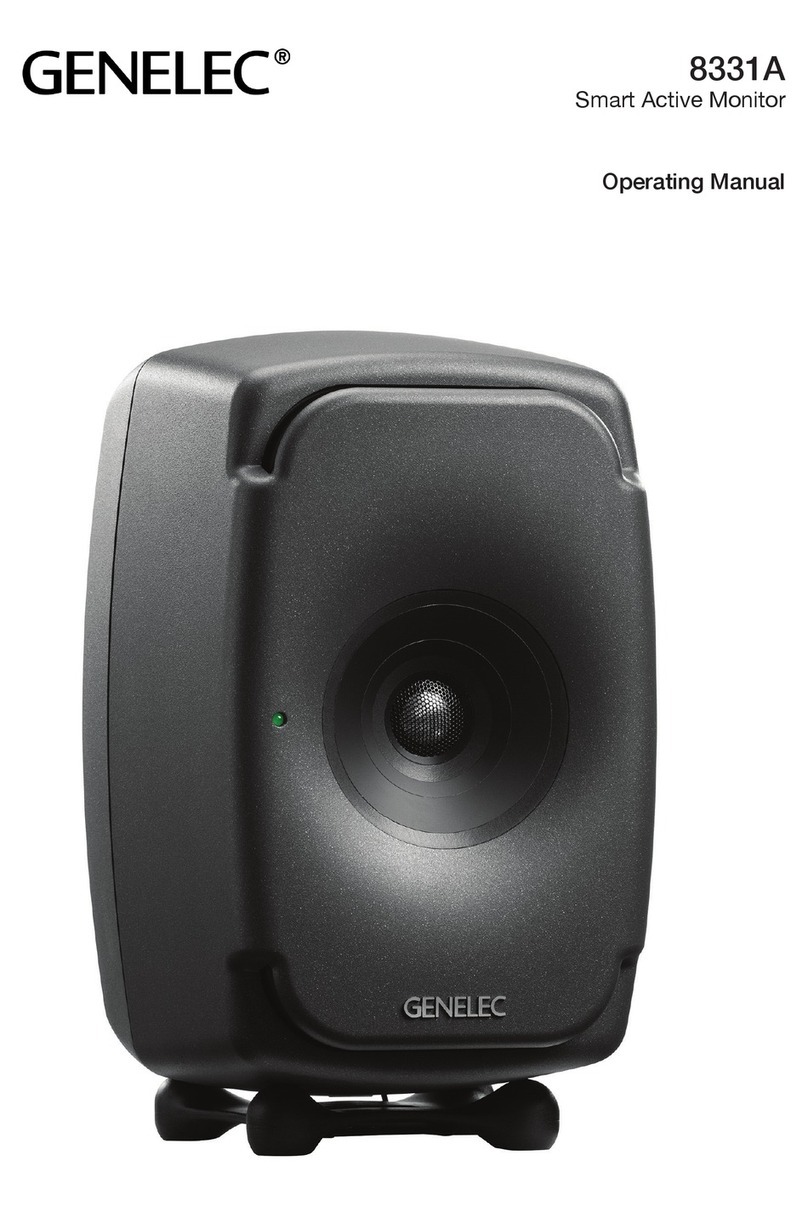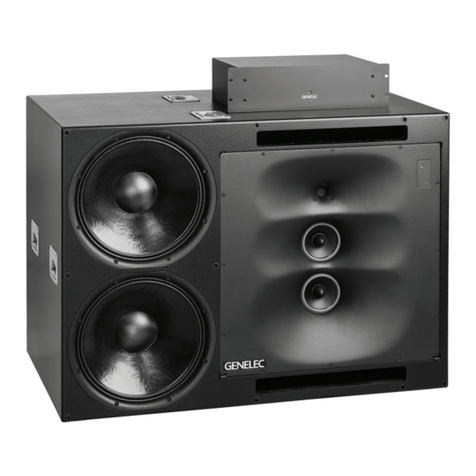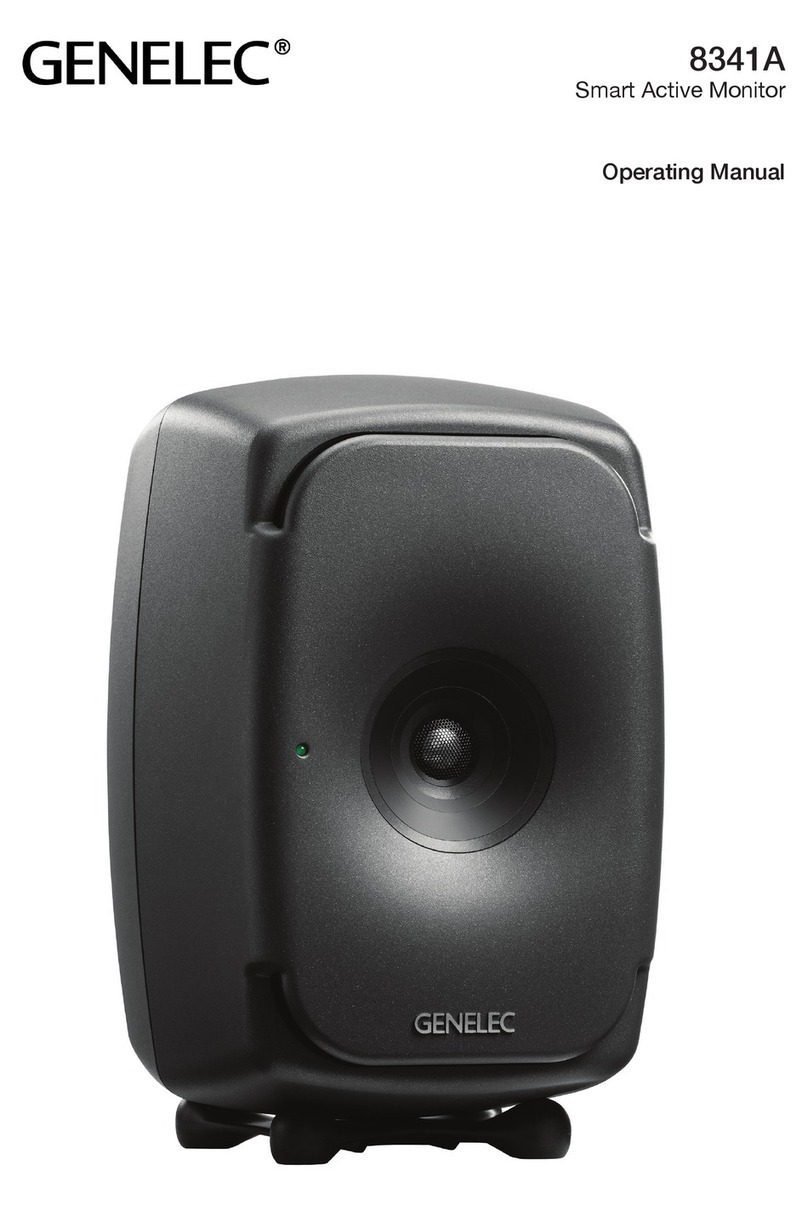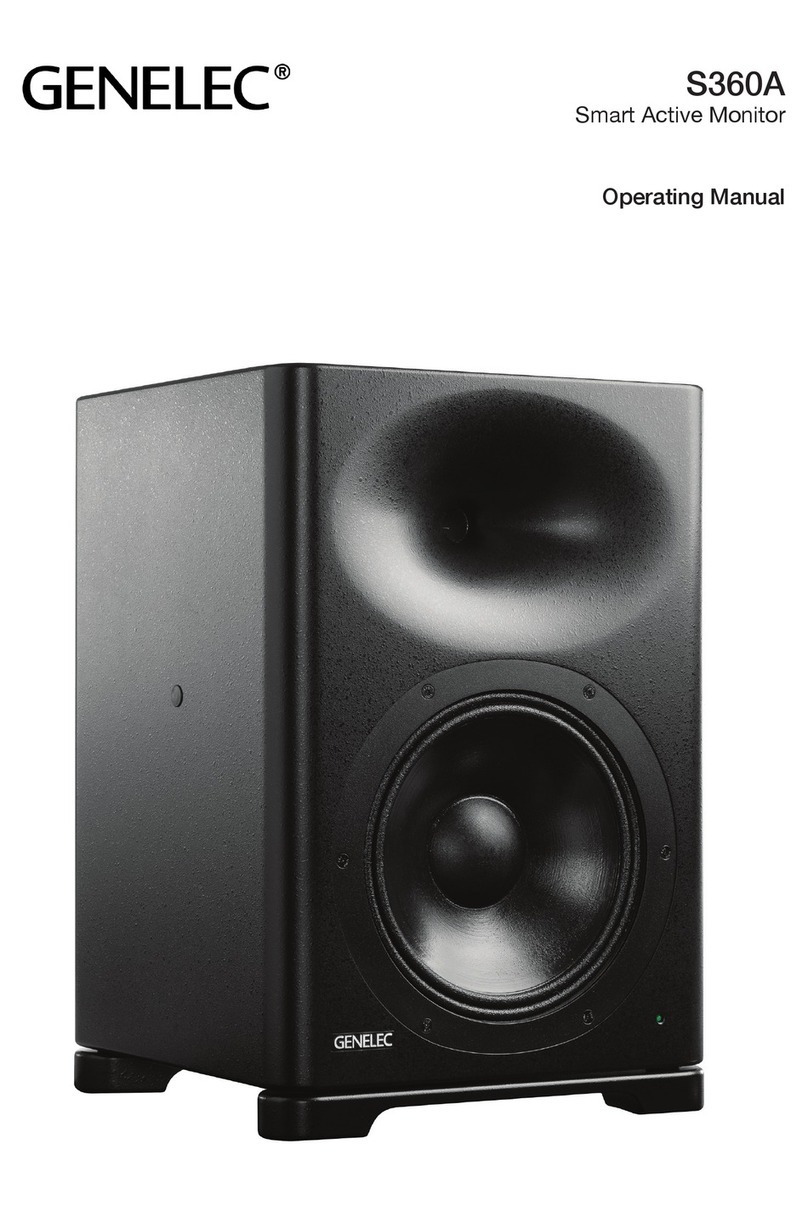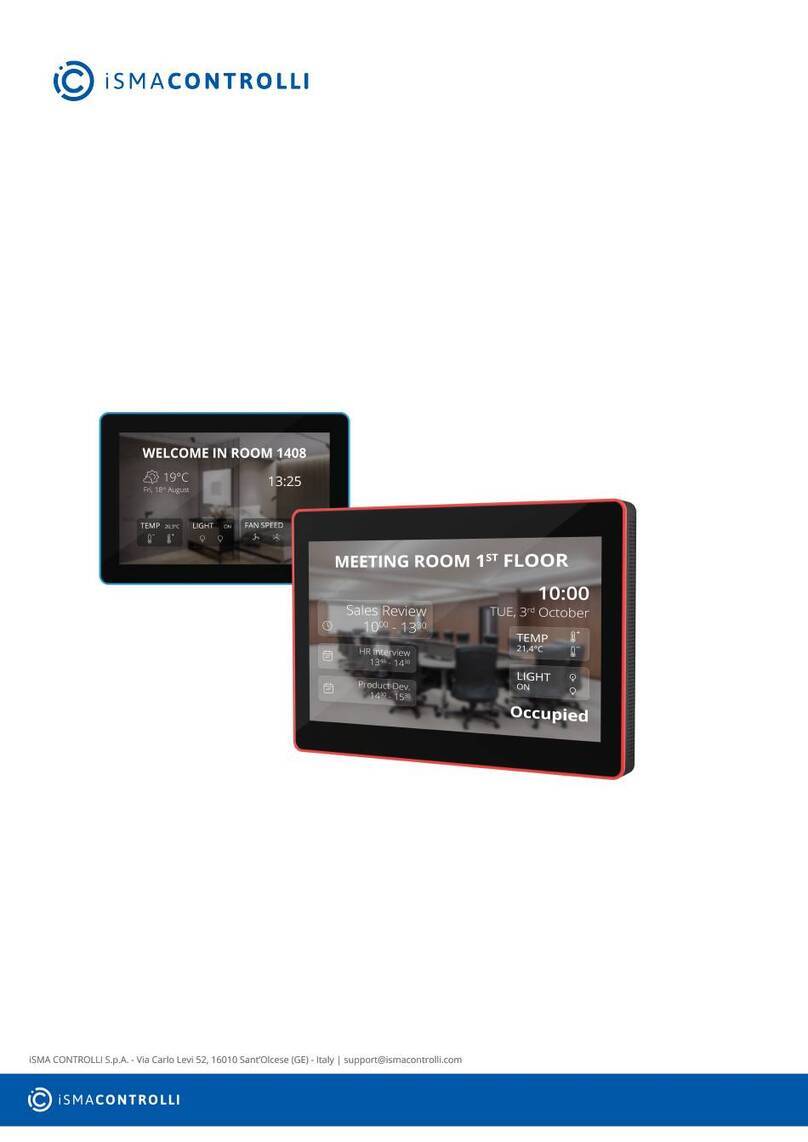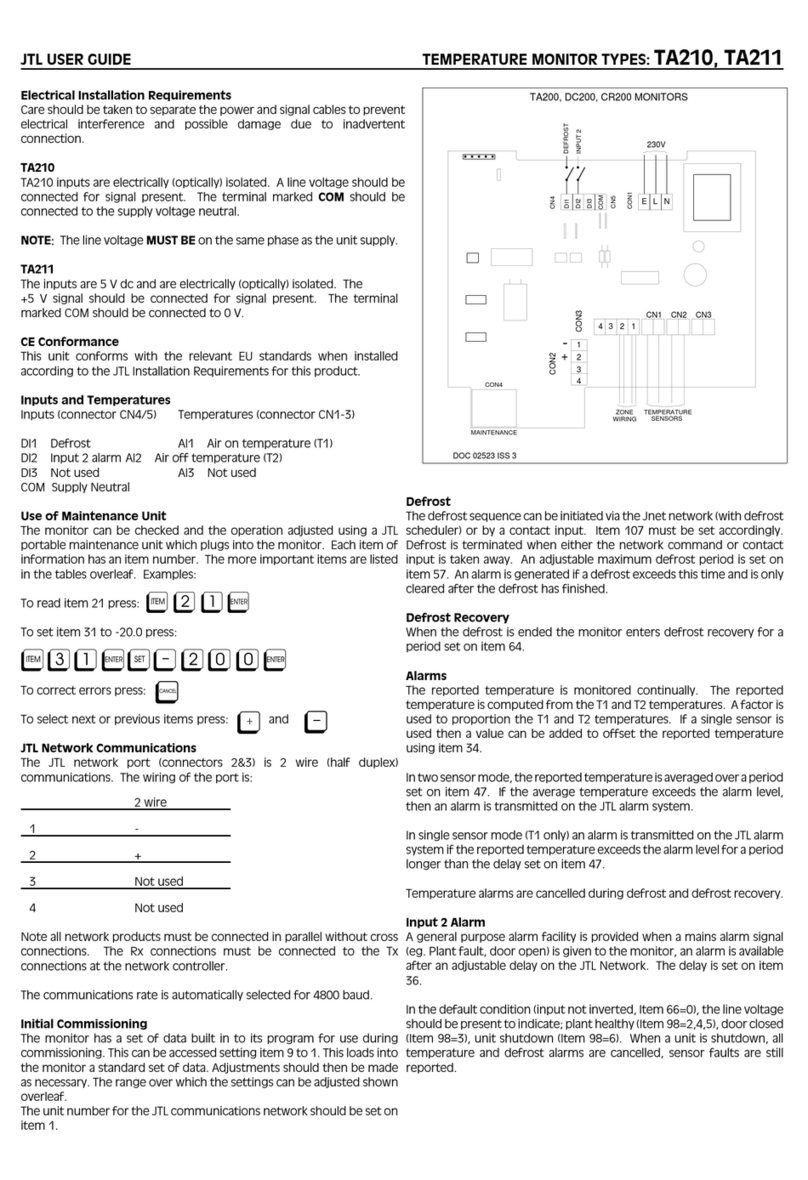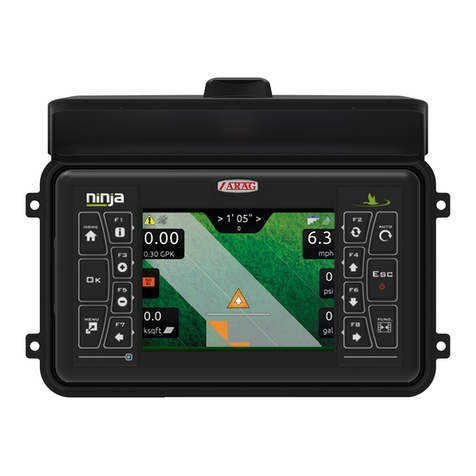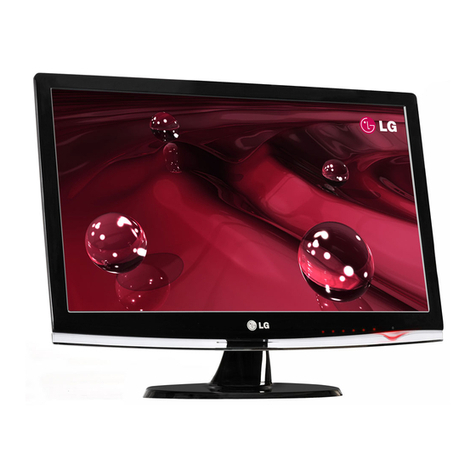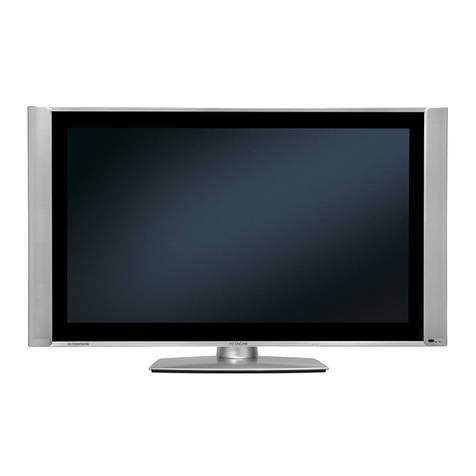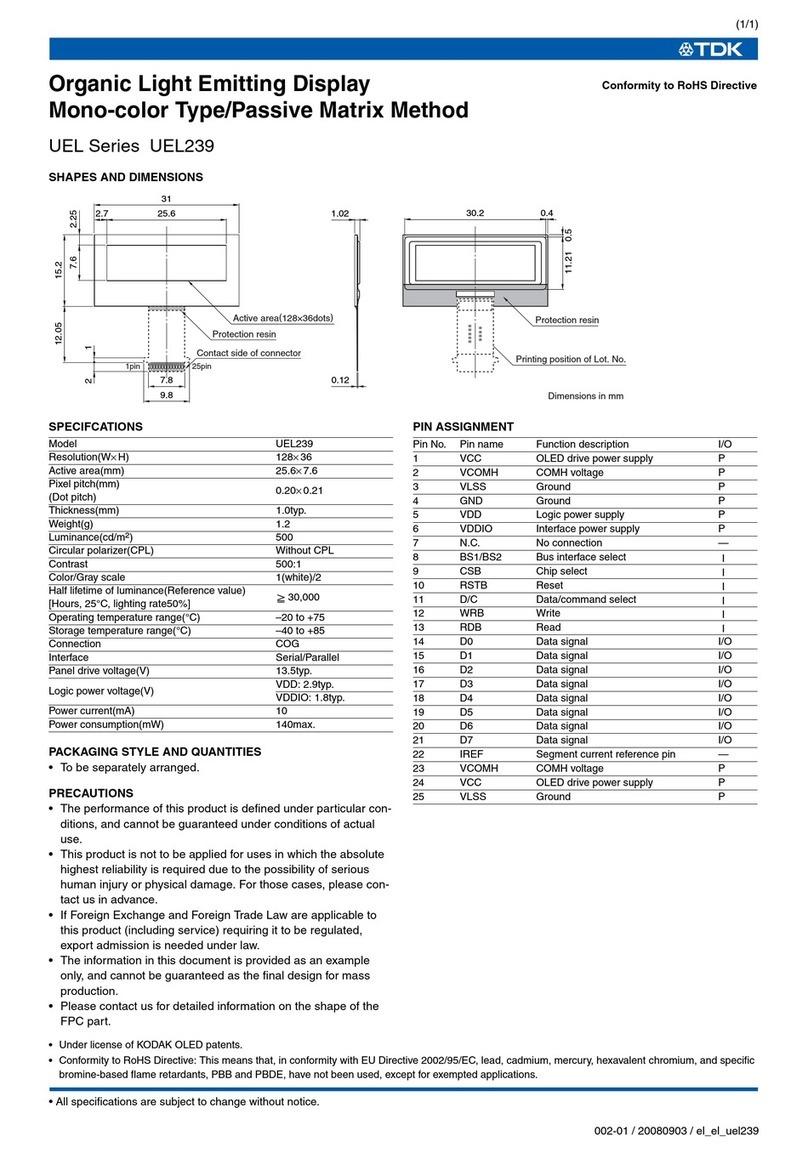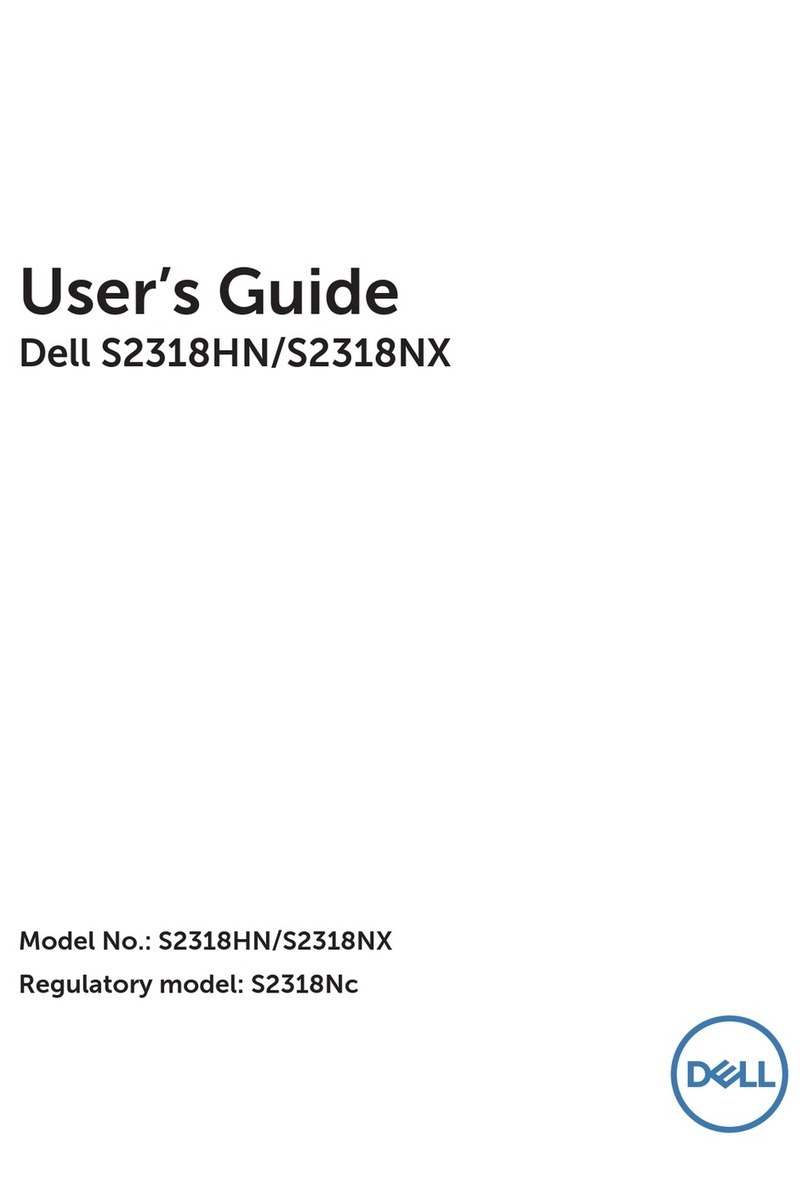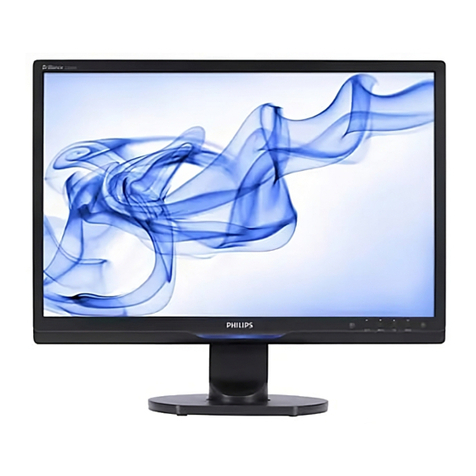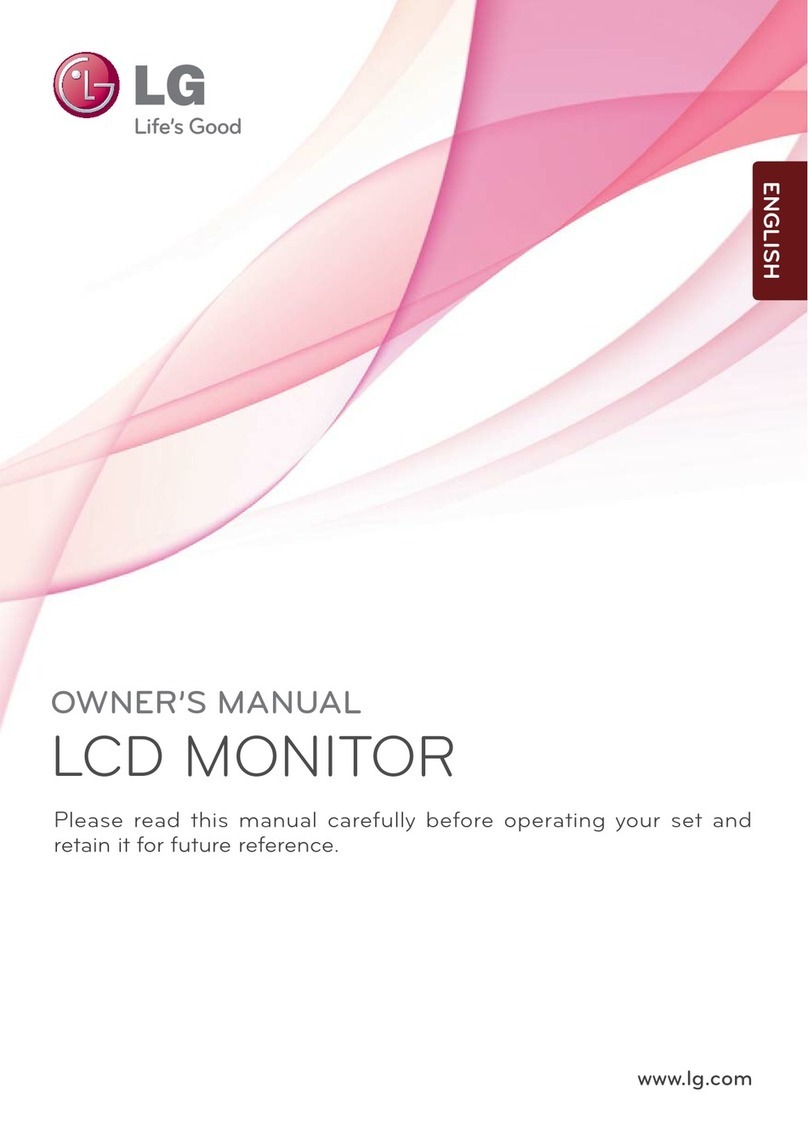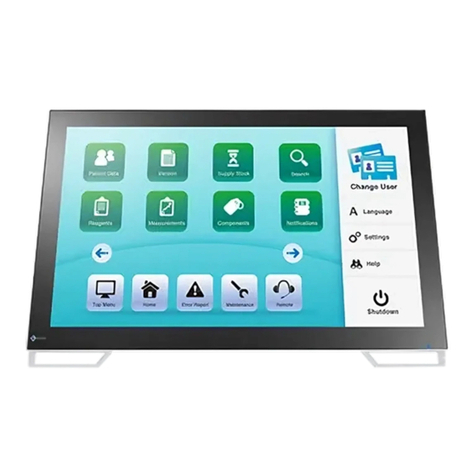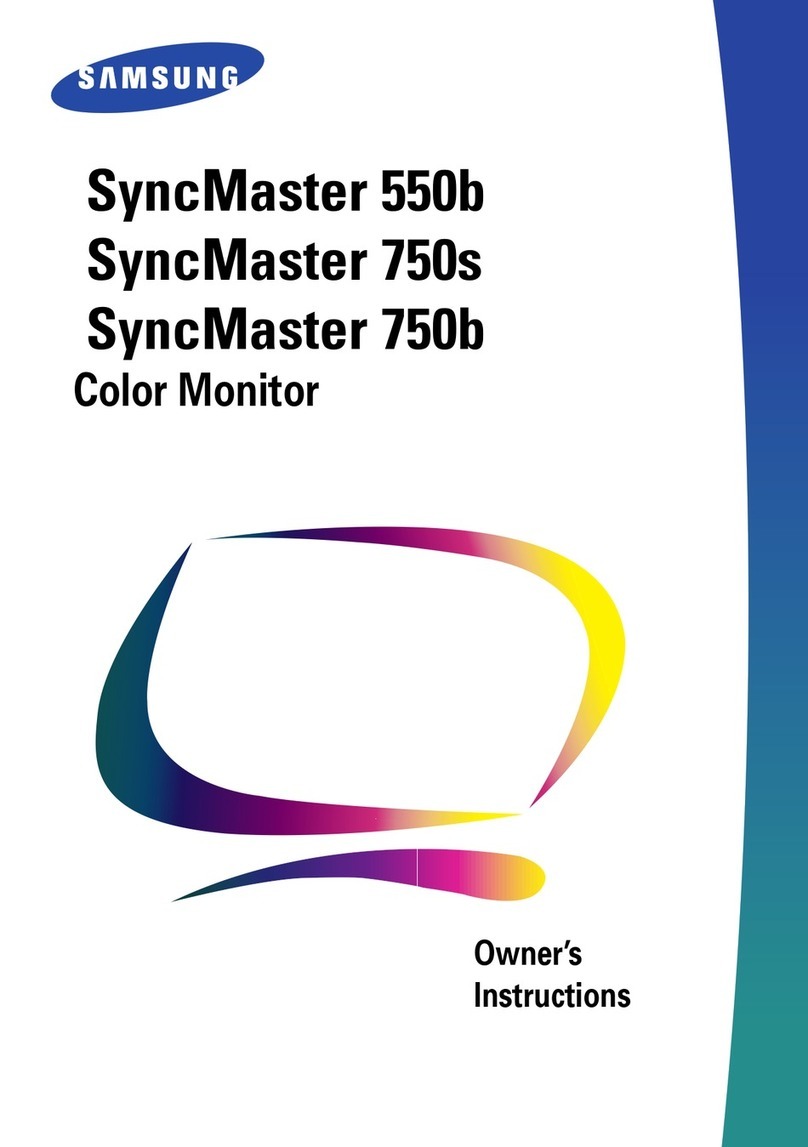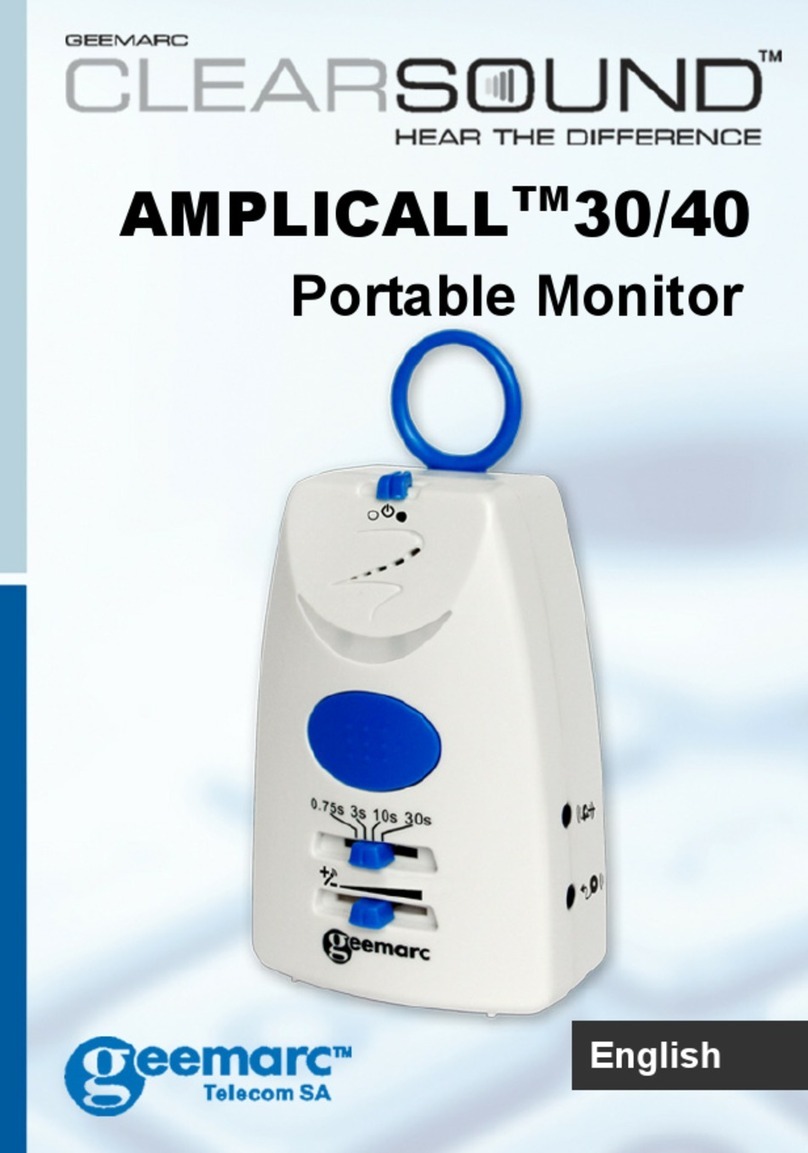Genelec 6010A User manual

The right monitors.
The correct setup.
Perfect sound.
Monitor setup guide

3
Active electronic crossover operating at low signal
levels.
Optimized ampliers. Each transducer is driven by
its own optimized amplier.
Protection circuitry. Sophisticated drive unit
protection circuitry for safe operation.
Room response controls. Precise room response
controls for optimizing in-room performance.
Directivity Control Waveguide DCW for at on- and
off- axis response.
Genelec key technologies ..................... 3
What is a monitor? ............................. 4
Monitoring ............................................. 5
Basics of system setup ...................... 6
Monitor placement ................................ 7
Monitor settings ..................................... 11
Subwoofer placement ........................... 12
Room improvements .......................... 14
Room treatments .................................. 15
Acoustic improvements ........................ 18
Fundamentals ..................................... 20
Monitor listening distance
recommendations ................................. 25
Genelec key technologiesTable of contents
Monitor setup guide2

4 5Monitor setup guideWhat is a monitor?
A person or a device that observes, checks, controls,
warns or keeps continous record of something.
An audio monitor is much more than just a
loudspeaker that sounds good. It is a surveillance
device of the process of either recording or mixing
or transmitting, or any situation where critical audio
work is performed.
Add the word reference to the word monitor and we
get the reference monitor. What does it take for a
monitor to become a reference monitor? It needs to
be reliable and well known but also we need to know
the frequency response at the listening position
so that we are able to calibrate the monitor as at
as possible. Only then we can call it a reference
monitor.
Select the right Genelec monitor to serve as a
perfect tool for your situation at
www.genelec.com/learning-center/speaker-selection
What is a
monitor?
What is a
reference
monitor?
Monitoring
What is a monitor?

6 7
Basics of system setup.
Monitor placement
Step 1
Step 2
Step 3
Step 4
Step 1
Step 2
Basics of system setup. Monitor setup guide
Identify your listening
area. Try to have
the listening position
within the front 1/3
of the room. Place
the monitors in 60°
angle and point them
towards the listening
position.
Avoid listening position
closer than 1 m from
any wall.
Find the left-right
symmetry axis of your
room. Establish the
symmetrical listening
position.
Every monitor has a listening distance
recommendation. Place the monitor accordingly.
(see page 25 et seq.).
Step 1
60°
LR
60°
LR
›1 m

8 9Monitor setup guide
Avoid placing the monitors between 1-2.2 m from the
wall due to wall cancellation.
A monitor should not be placed closer than 1.2 m
from the oor.
Point the monitors towards your listening position, do
not tilt more than 15 degrees.
Normal listening position height is between 1.2 and
1.4 m.
When you move the speaker closer to the wall, the
cancellation moves higher in frequency range.
You can easily fi nd the cancellation
frequencies with the Genelec AcoustiTape.
Ordercode MAI-0079.
Step 5
Speaker distance
to the front wall
Cancellation
frequency and
wall behind the
speaker
Step 6
Step 7
Monitor heights
(ITU-R BS.775-1
standard)
5 cm
1 m
2,2 m
OK
Avoid
OK
Basics of system setup.
SPL
f
40 200
SPL
f
40 200
‹15°
‹15°
‹15°
1.2-1.4 m
1.2 m

10 11Monitor setup guide
Set the sensitivity control on all speakers clockwise
to full (-6 dBu) to begin with.
More information can be found in the operating
manual of your product.
If you use an acoustic measurement device like
RoomEQ Wizard, measure ear height at the listening
position. Analyse the results and adjust DIP-switches
to achieve as at and similar frequency response as
possible in each monitor.
If you have a large horizontal surface in front of the
monitors, a boost around 160 Hz boost typically
occurs. Some Genelec monitors have a desktop
control DIP switch, which compensates the 160 Hz
boost by -4 dB.
Monitor settings
Step 1
Input sensitivity
control
Step 2
Step 3
Desktop control
DIP switch
Basics of system setup.
An ideal 5.1 setup.Correct monitor
placement
1110°
60°
+10°
-10°
RS
R
LS
L
111
111
0°
0°
0°
60°
60°
60°
+10°
-10°
+10°
RS
R
LS
L
C
dBu
+12
+6
-6
+3
-3
-4
0
SENSITIVITY FOR
100 dB SPL @ 1 m
1 2 3 4
1
2
4
OFF
ON
dB
4 dB @ 160 Hz frequency
1 2 3 4
1
2
4
OFF
ON

12 13Monitor setup guide
Adjust the subwoofer phase and level according to
the procedure described in the operating manual.
Recommended
distance from
front wall
(without
subwoofer)
Speaker and
subwoofer
distance from the
front wall
Step 3
Basics of system setup.
Subwoofer placement
Finding a subwoofer position can be dif cult. Try to
nd a location between left-center or center-right
area at the front wall. Avoid exact center position,
where the room modes may cause problems.
Placing the subwoofer to a corner or near the front
wall boosts the bass. Use sensitivity control to
compensate the bass boost.
A Genelec subwoofer reproduces the frequencies up
to 85 Hz and the monitors reproduce the frequencies
above 85 Hz. The LFE channel in the subwoofer
reproduces frequencies up to 120 Hz.
Step 1
Subwoofer
placement
Step 2
RS
R
LS
L
C
possible
subwoofer
placement
possible
subwoofer
placement
5 cm
1 m
2.2 m
OK
Avoid
OK
5 cm 1.1 m 2 m
5 cm
1.1 m
2 m
60 cm
60 cm
60 cm
SPL
frequency
subwoofer main speakers
85 Hz

14 15Monitor setup guideRoom improvements.
Room improvements.
Adjusting the listening space
Calibration doesn’t necessarily give best results if
the room is not acoustically properly treated. Some
improvements can be made quite easily. There
is plenty of information in the Internet and many
acoustic professionals to help you out with room
issues.
Wall surfaces, ceilings and oors can be re ective,
diffusive or absorptive. Combinations of these are
often used.
Hard surfaces such as
glass, concrete, dry wall or
MDF re ect the sound.
Soft materials such as rock/
mineral wool, carpets and
curtains absorb the sound.
The thicker the layer is,
better is the absorption.
Irregular surfaces such as
diffusers or bookshelves
diffuse and spread the
sound around.
Combination of diffusive
and absorptive surface.
Room treatments
Diffusion and
absorption

16 Room improvements. 17Monitor setup guide
Multiple
re ections
Two opposite, parallel surfaces in a room sustain
the sound energy bouncing back and forth causing
utter echo, standing waves or cancellation dips.
Re ections can also occur between three or more
surfaces. Optimal acoustic situation is when you
receive a natural direct sound from the speakers to
your listening position (a.k.a. sweet spot) without the
room re ections coloring the sound and the stereo
imaging.
Flutter echo
L
R

18 19Room improvements. Monitor setup guide
Acoustic improvements
Improve the acoustics in your room by following
these steps:
Cut the corners, use MDF or drywall and ll the
empty space with mineral wool.
Use damping material on the front wall surfaces.
Use damping material on the side walls.
Use diffusive element(s) on the back wall. This can
be e.g. a simple bookself.
Massive layer of damping material at the back of the
room, up to 40-50 cm or more is okay.
Use damping and diffusive material above the
listening position.
The picture shows a 5.1 system. The same rules
apply to a stereo setup.
Step 1
Step 2
Step 3
Step 4
Step 5
Step 6
Step 1
Step 2
Step 3
Step 4
Step 5
Step 6

Sound travels approximately 340 m/s. It takes 3 ms
to travel 1 meter.
Industry standard SPL for cinema mixing work is
85 dB at the listening position.
Common denitions of Frequency spectra:
Ideally the sound volume drops by
6 dB when the distance doubles.
20 21Fundamentals Monitor setup guide
Fundamentals.
Basics of sound
Sound volume increases 3 dB
when the power doubles.
Useful low frequency spectrum extension
5004003002001009080706050403020
Large Pipe Organ 16 Hz
5 strings Electric bass 31 Hz
Guitar 80 Hz
Male fundamental
Tuba (horn) 45 Hz
Double bass 40 Hz
Concert grand piano 29 Hz
frequency 120 Hz
Female fundamental
frequency 230 Hz
1 m 100 dB 0 dB
2 m 94 dB -6 dB
4 m 88 dB -12 dB
100 W 85 dB 0 dB
200 W 88 dB +3 dB
400 W 91 dB +6 dB
Subsonic frequencies 1 Hz - 20 Hz Not audible to
humans.
Very low frequencies 20 Hz - 40 Hz Lowest audible
octave to humans.
Low frequencies 40 Hz - 160 Hz Music low
frequencies, here are
the kick drum, bass
and low register of
grand piano.
Middle low
frequencies
160 Hz – 400 Hz Middle C of piano is
here.
Middle frequencies 400 Hz - 2.5 kHz Low-order harmonics
of most instruments.
Middle high
frequencies
2.5 kHz - 5 kHz Ear most sensitive to
this range. Presence,
voice frequencies are
here.
High frequencies 5 kHz - 10 kHz Brightness and
harmonics are here.
Very high frequencies 10 kHz - 20 kHz Highest harmonics
are here.

22 23
Sound radiation
Radiation load
Monitor setup guide
The monitor radiates omnidirectionally at low
frequencies. At higher frequencies, the energy
radiated becomes increasingly directional: midrange
frequencies radiate in a hemispherical pattern and
high frequencies in a beam- or ray-like pattern. All
this sound energy re ects from the walls around and
should be controlled.
Ideally, free standing monitor has a at frequency
response. Placing the monitor near the wall boosts
the low frequencies; one wall up to +6 dB, a two-wall
corner (or wall and desk) up to +12 dB and a two-
wall corner with oor, desk (or even ceiling) boosts
up to +18 dB. Genelec speakers come with DIP
switches which are designed to compensate this
boundary load effect. (AutoCal in DSP systems.)
low frequencies midrange high frequencies
SPL
frequency
Fundamentals
Free eld or anechoic chamber
In a corner
On or in the wall
Corner and oor
Wall proximity
gives low
frequency boost
SPL
frequency
SPL
+6 dB
frequency
+12 dB
frequency
frequency
SPL
+18 dB
frequency
SPL

Low frequency
boost correction
SPL
frequency
1234
1
2
4
OFF
ON
24 25Monitor setup guideFundamentals
The ideal situation is to have the room, the speaker and
the listener in a good harmony.
Each room is different and behaves differently when
the speaker is placed in the room. Speaker calibration
minimizes the coloration caused by the room. Ideal
calibration results in a at frequency response, with
minimum boosts/bumps, dips/notches or ripples across
entire frequency response.
Monitor listening distance
recommendations
1038CF/1238CF
1038B/1038BC
1034B/1034BC
1039A
1035B
1036A
0.5 1 1.5 2 2.5 3 3.5 4 4.5 5 in meter
0.5 1 1.5 2 2.5 3 3.5 4 4.5 5 in meter
Not recommended
Recommended
Typical listening distance in studio control rooms
Decreasing recommendation
6010A/8020B
8030A/8130A
8040A/8240A
8050A/8250A
1032A
8260A
1037C

26 Fundamentals 27Monitor setup guide
Monitors -3 dB LF
extension
SPL short term RMS
@ 1 m *)
6010A 73 Hz 93 dB
8020B 66 Hz 95 dB
8030A / 8130A 55 Hz 100 dB
8040A / 8240A 45 Hz 105 dB
8050A / 8250A 35 Hz 110 dB
1032A 40 Hz 113 dB
8260A 26 Hz 113 dB
1037C 35 Hz 116 dB
1038CF / 1238CF 55 Hz 118 dB
1038B 33 Hz 120 dB
1034B 32 Hz 123 dB
1039A 29 Hz 126 dB
1035B 29 Hz 131 dB
1036A 19 Hz 131 dB
Subwoofers Frequency
+/-3 dB
SPL short term RMS
@ 1 m
5040A 35 - 85 Hz 96 dB
7050B 25 - 85 Hz 100 dB
7060B / 7260A 19 - 85 / 120 Hz 108 dB
7070A / 7270A 19 - 85 / 120 Hz 112 dB
7071A / 7271A 19 - 85 / 120 Hz 118 dB
7073A 19 - 85 / 120 Hz 124 dB
*) Maximum short term sine wave acoustic output on axis in half space, averaged from
100 Hz to 3 kHz @ 1m
Room
volume
up to
Subwoofers
for 2-channel
(Stereo)
Subwoofers
for 5-channel
(Surround)
55 m35040A 5040A
65 m37050B 7050B
75 m37050B 7060B / 7260A
85 m37060B / 7260A 7070A / 7270A
95 m37070A / 7270A 7071A / 7271A
100 m37070A / 7270A 7071A / 7271A
115 m37071A / 7271A 7071A / 7271A
125 m37071A / 7271A 7073A
125 m37071A / 7271A 7073A
170 m37071A / 7271A 7073A
200 m37073A 2 x 7073A
240 m37073A 2 x 7073A
400 m32 x 7073A 3 x 7073A
400 m32 x 7073A 3 x 7073A

Notes Notes

sound passion
Notes

2011-1
Genelec Oy
Olvitie 5 · 74100 Iisalmi · Finland
T +358 17 83 881
F +358 17 81 2267
e-mail: [email protected]
Genelec Document BBAGE084. Copyright Genelec Oy 2011.
All data subject to change without prior notice.
www.genelec.com
Other manuals for 6010A
4
This manual suits for next models
26
Table of contents
Other Genelec Monitor manuals
